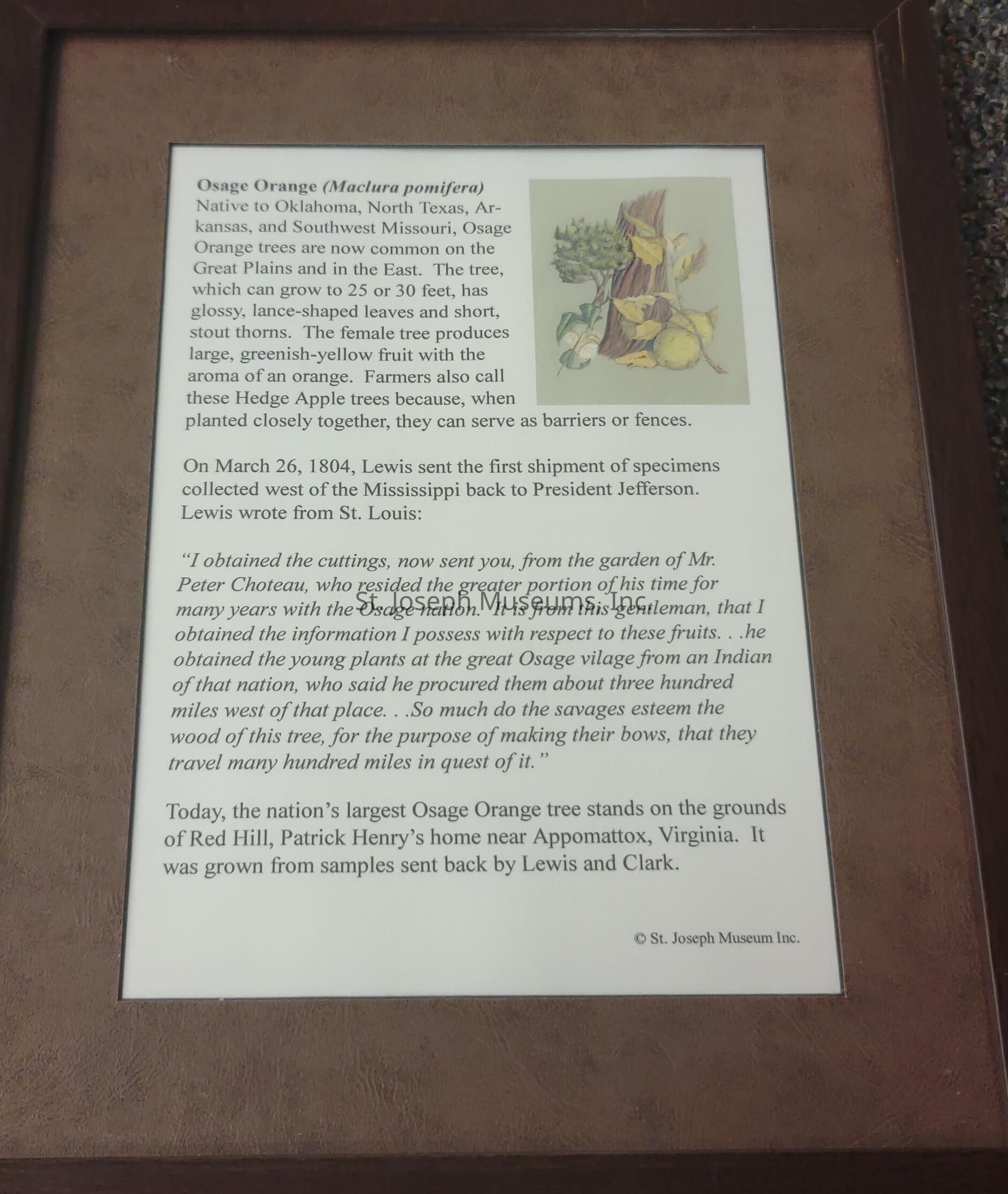Name/Title
Osage Orange (Maclura pomifera)Entry/Object ID
2021.1.18 BScope and Content
Osage Orange (Maclura pomifera) Plant description, framed.
Native to Oklahoma, North Texas, Arkansas, and Southwest Missouri, Osage Orange trees are now common on the Great Plains and in the East. The tree, which can grow to 25 or 30 feet, has glossy, lance-shaped leaves and short, stout thorns. The female tree produces large, greenish-yellow fruit with the aroma of an orange. Farmers also call these Hedge Apple trees because, when planted closely together, they can serve as barriers or fences.
On March 26, 1804, Lewis sent the first shipment of specimens collected west of the Mississippi back to President Jefferson. Lewis wrote from St. Louis:
"I obtained the cuttings, now sent to you, from the garden of Mr. Peter Choteau, who resided the greater portion of his time for many years with the Osage nation. It is from this gentleman, that I obtained the information I possess with respect to these fruits... he obtained the young plants at the great Osage vilage from an Indian of that nation, who said he procured them about three hundred miles west of that place... So much do the savages esteem the wood of this tree, for the purpose of making their bows, that they travel many hundred miles in quest of it."
Today, the nation's largest Osage Orange tree stands on the grounds of Red Hill, Patrick Henry's home near Appomattox, Virginia. It was grown from samples sent back by Lewis and Clark.Context
Originally designed by the St. Joseph Museum in the fall of 2004. Titled "Botanical Wonders of the Uncharted West. The Recorded Flora of the Lewis & Clark Expedition."Collection
Lewis and ClarkLexicon
LOC Thesaurus for Graphic Materials
Botanical drawings, Expeditions & surveysArchive Items Details
Title
Osage Orange (Maclura pomifera)Creator
Mary L. FletcherDate(s) of Creation
2004Subjects
Plants, Watercolor paintingsParts
Count
2Parts
Watercolor of plant and descriptive label, both framed.Condition
Overall Condition
Very GoodProvenance
Notes
"Botanical Wonders of the Uncharted West" visually depicts how well Lewis followed Jefferson's instructions. In recognition of this achievement, The S. Joseph Museums, Inc. commissioned accomplished artist Mary Fletcher to create fifty (50) selected paintings of flora documented by the Corps during their Journey. These framed watercolor originals are accompanied by similarly framed labels, generated by former Head of Research Jackie Lewin, which describe the corresponding plants with appropriate quotations from the Journals. This collection makes available for study and appreciation plants that were new to Lewis and Clark, but which Native Peoples already recognized as valuable sources of food, medicine, and tools. Some of these still remain a mystery to many, but all will enjoy their beauty, their diverse uses, and their accomplished renderings.
